#Apollo Guidance Computer
Explore tagged Tumblr posts
Text


An early Apollo Block II DSKY under the care of Mike Stewart, demonstrating P65 (one of the important lunar lander decent programs) I don't think this DSKY was a formal exhibit, but it was cool. It's from around the time of Apollo 5, early Block II hardware
VCF West XVIII
#vcfwxviii#vcf west xviii#vintage computer festival west xviii#commodorez goes to vcfwxviii#apollo#apollo guidance computer#dsky
279 notes
·
View notes
Text

AGC DSKY (Apollo Guidance Computer Display and Keyboard)
Dual Screen

Hackaday

Disassemble






youtube
13 notes
·
View notes
Text
From Apollo to Chang'e: The Evolution of Computing in Space Exploration
The role of computers in space exploration has evolved dramatically since the Apollo era. Their increased capabilities have allowed for more complex missions, greater autonomy, and improved safety. Here’s a comparison of computer usage in the Apollo era versus in the modern era, exemplified by China’s lunar program: Apollo Era (1960s-1970s): Primitive by Today’s Standards: The Apollo Guidance…

View On WordPress
0 notes
Link
Astronomy Daily - The Podcast: S03E239 Welcome to Astronomy Daily, your go-to source for the latest in space exploration and astronomical discoveries. I'm your host, Anna, and today we have an exciting lineup of stories that range from NASA's mission delays to innovative scientific theories about our universe. Highlights: - NASA Mission Delays: Discover the reasons behind NASA's decision to postpone the launch of three critical missions, including the Interstellar Mapping and Acceleration Probe. Learn about the impacts on other missions sharing the SpaceX Falcon 9 rocket and the importance of these solar studies. - Orion's Heat Shield Challenge: Explore the unexpected issues encountered with the Orion spacecraft's heat shield following its Artemis 1 mission. Understand the engineering challenges and solutions being developed to ensure astronaut safety in future missions. - Parker Solar Probe's Daring Journey: Get the latest updates on the Parker Solar Probe as it prepares for its closest approach to the Sun. Discover the groundbreaking data it's collecting and its significance for understanding solar phenomena. - Apollo Instruments' Moonwatch: Dive into the innovative creation of a wearable timepiece replicating the Apollo Guidance Computer's interface. Learn how this fusion of history and technology offers an educational tool for space enthusiasts. - China's Sea-Based Launch Success: Follow the achievements of Galactic Energy, a Beijing-based private rocket manufacturer, as it successfully launches satellites from a sea-based platform, marking a milestone in China's space sector. - Testing the Anthropic Principle: Delve into the groundbreaking research proposing an experimental framework to test the anthropic principle. Understand the potential implications for our understanding of the universe's conditions for life. For more cosmic updates, visit our website at astronomydaily.io. Sign up for our free Daily newsletter to stay informed on all things space. Join our community on social media by searching for #AstroDailyPod on Facebook, X, Tumblr, YouTube, YouTubeMusic, and TikTok. Share your thoughts and connect with fellow space enthusiasts. Thank you for tuning in. This is Anna signing off. Until next time, keep looking up and stay curious about the wonders of our universe. 00:00 - NASA announces significant delays in three important missions aimed at studying our Sun 01:44 - Orion's heat shield suffered significant damage during its Artemis 1 mission 03:37 - NASA's Parker Solar Probe is preparing for its closest ever approach to sun 05:25 - British startup Apollo Instruments has created a fully functional Apollo Guidance Computer watch 07:08 - Beijing based private rocket manufacturer Galactic Energy has successfully launched four satellites 08:41 - The anthropic principle suggests that our universe is fine tuned to support life 11:35 - Astronomy Daily brings you the latest developments in space exploration and astronomy ✍️ Episode References NASA https://www.nasa.gov/ SpaceX Falcon 9 https://www.spacex.com/vehicles/falcon-9/ Johns Hopkins Applied Physics Laboratory https://www.jhuapl.edu/ Apollo Instruments https://www.apolloinstruments.com/ Rosco https://www.rosco.com/ Journal of Cosmology and Astroparticle Physics https://iopscience.iop.org/journal/ 7516 7--- Lightbird satellite https://www.isas.jaxa.jp/en/missions/spacecraft/future/lightbird.html Galactic Energy http://www.galactic-energy.com/ Guodian Gaoki https://www.guodiangaoki.com/ Astronomy Daily https://astronomydaily.io/
#acceleration#and#apollo#artemis#astrodailypod#computer#delays#dieski#guidance#heat#interstellar#mapping#mission#nasa#orion#parker#probe#shield#solar#spacecraft
0 notes
Text
youtube
The 1969 Apollo Guidance Computer
0 notes
Text

LaRue Burbank, mathematician and computer, is just one of the many women who were instrumental to NASA missions.
4 Little Known Women Who Made Huge Contributions to NASA
Women have always played a significant role at NASA and its predecessor NACA, although for much of the agency’s history, they received neither the praise nor recognition that their contributions deserved. To celebrate Women’s History Month – and properly highlight some of the little-known women-led accomplishments of NASA’s early history – our archivists gathered the stories of four women whose work was critical to NASA’s success and paved the way for future generations.
LaRue Burbank: One of the Women Who Helped Land a Man on the Moon
LaRue Burbank was a trailblazing mathematician at NASA. Hired in 1954 at Langley Memorial Aeronautical Laboratory (now NASA’s Langley Research Center), she, like many other young women at NACA, the predecessor to NASA, had a bachelor's degree in mathematics. But unlike most, she also had a physics degree. For the next four years, she worked as a "human computer," conducting complex data analyses for engineers using calculators, slide rules, and other instruments. After NASA's founding, she continued this vital work for Project Mercury.
In 1962, she transferred to the newly established Manned Spacecraft Center (now NASA’s Johnson Space Center) in Houston, becoming one of the few female professionals and managers there. Her expertise in electronics engineering led her to develop critical display systems used by flight controllers in Mission Control to monitor spacecraft during missions. Her work on the Apollo missions was vital to achieving President Kennedy's goal of landing a man on the Moon.
Eilene Galloway: How NASA became… NASA
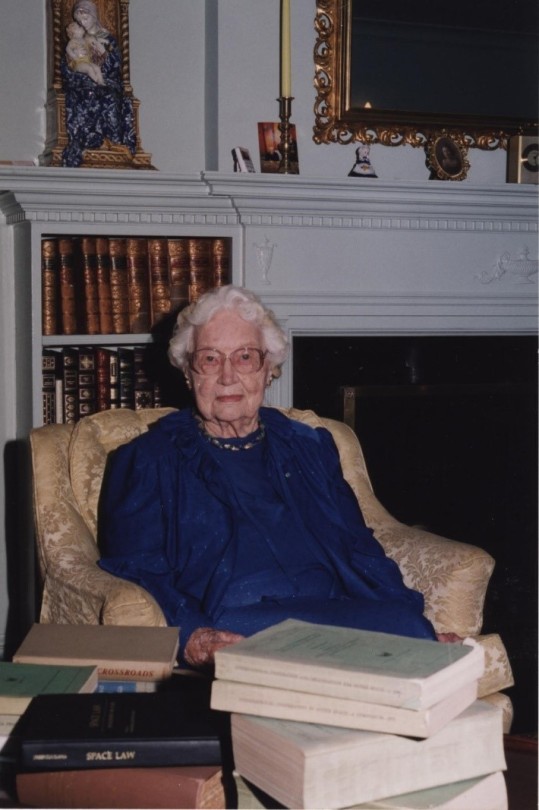
Eilene Galloway wasn't a NASA employee, but she played a huge role in its very creation. In 1957, after the Soviet Union launched Sputnik, Senator Richard Russell Jr. called on Galloway, an expert on the Atomic Energy Act, to write a report on the U.S. response to the space race. Initially, legislators aimed to essentially re-write the Atomic Energy Act to handle the U.S. space goals. However, Galloway argued that the existing military framework wouldn't suffice – a new agency was needed to oversee both military and civilian aspects of space exploration. This included not just defense, but also meteorology, communications, and international cooperation.
Her work on the National Aeronautics and Space Act ensured NASA had the power to accomplish all these goals, without limitations from the Department of Defense or restrictions on international agreements. Galloway is even to thank for the name "National Aeronautics and Space Administration", as initially NASA was to be called “National Aeronautics and Space Agency” which was deemed to not carry enough weight and status for the wide-ranging role that NASA was to fill.
Barbara Scott: The “Star Trek Nerd” Who Led Our Understanding of the Stars
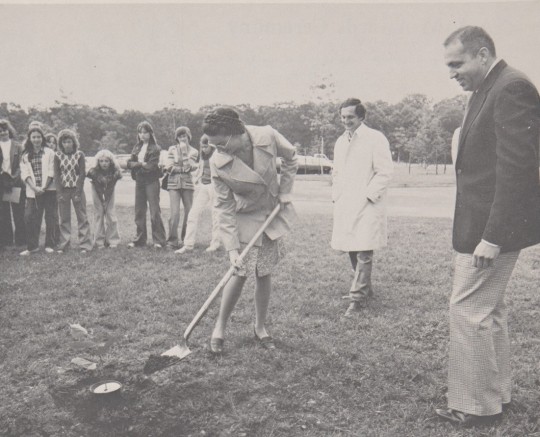
A self-described "Star Trek nerd," Barbara Scott's passion for space wasn't steered toward engineering by her guidance counselor. But that didn't stop her! Fueled by her love of math and computer science, she landed at Goddard Spaceflight Center in 1977. One of the first women working on flight software, Barbara's coding skills became instrumental on missions like the International Ultraviolet Explorer (IUE) and the Thermal Canister Experiment on the Space Shuttle's STS-3. For the final decade of her impressive career, Scott managed the flight software for the iconic Hubble Space Telescope, a testament to her dedication to space exploration.
Dr. Claire Parkinson: An Early Pioneer in Climate Science Whose Work is Still Saving Lives

Dr. Claire Parkinson's love of math blossomed into a passion for climate science. Inspired by the Moon landing, and the fight for civil rights, she pursued a graduate degree in climatology. In 1978, her talents landed her at Goddard, where she continued her research on sea ice modeling. But Parkinson's impact goes beyond theory. She began analyzing satellite data, leading to a groundbreaking discovery: a decline in Arctic sea ice coverage between 1973 and 1987. This critical finding caught the attention of Senator Al Gore, highlighting the urgency of climate change.
Parkinson's leadership extended beyond research. As Project Scientist for the Aqua satellite, she championed making its data freely available. This real-time information has benefitted countless projects, from wildfire management to weather forecasting, even aiding in monitoring the COVID-19 pandemic. Parkinson's dedication to understanding sea ice patterns and the impact of climate change continues to be a valuable resource for our planet.
Make sure to follow us on Tumblr for your regular dose of space!
#NASA#space#tech#technology#womens history month#women in STEM#math#climate science#computer science
2K notes
·
View notes
Text
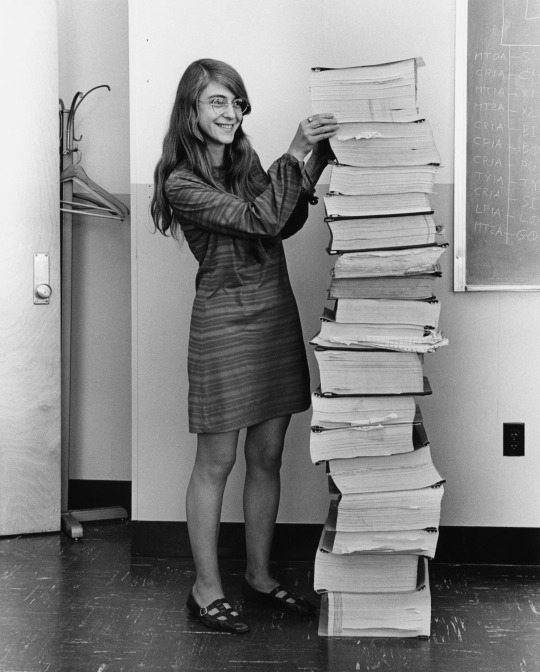
Margaret Hamilton, Director of the Apollo project Software Engineering Division, with a stack of papers containing the code to the Apollo Guidance Computer navigation software. The software that on this day, in 1969, guided Neil Armstrong and Buzz Aldrin when they landed on the Moon.
7K notes
·
View notes
Text

Sewn into the machine is the memory of an achievement that humbled the world, feet landed upon the moon we have all gazed upon. A testament not just to the people who landed, but to all of mankind. This is the ROM of the Apollo Guidance Computer, composed of what is known as Core Rope Memory. Individual copper lines are hand sewn in particular patterns to denote programs, read by the ferrite ring surrounding the copper lines. These copper lines were sewn by female workers in factories, in a way, seamstresses of a digital age. The Apollo Guidance Computer itself is very impressive in and of itself, I may post more about it.
127 notes
·
View notes
Text
Oh i was meaning like there's not a fun pun to be made about noncommutative mathematics more than surface level it's a maths jokes because it's about computers stuff
The fact that boygirl adequately explains my gender but girlboy does not implies that gender is noncommutative. I’d be surprised if it was associative too.
3K notes
·
View notes
Text
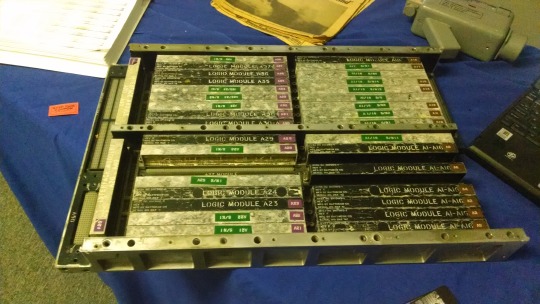
Block I and a half Apollo Guidance Computer (AGC).
This developmental unit was on display at VCF East 9.1 way back in 2014, and I'm not sure whom exactly it belonged to. It's more advanced than a Block I but it isn't quite a Block II
#vcfe9.1#vcf east 9.1#vintage computer festival east 9.1#commodorez goes to vcfe9.1#apollo guidance computer#apollo#agc
83 notes
·
View notes
Text
The Apollo guidance computer put a guy on the moon on 4kb of RAM and a 32kb hard disk that weighed 70 pounds and took up an entire room. My PC, that has 32GB of RAM and a 2TB SSD and takes up a single square foot of space in a glass case that i can pick up like a bankers box, sounds like it's passing away when a background program runs an update while I'm playing elder scrolls online. Another example of lazy millennials with no work ethic killing the moon landing industry
25 notes
·
View notes
Text
Launch of AS-101 (SA-6)






Lift off of AS-101 Saturn I (BP-13/SA-6) from Launch Complex 17, pad B, Cape Canaveral, Florida. It was the sixth flight of the Saturn I launch vehicle, and the first to carry the Apollo spacecraft (albeit the boilerplate version) into low Earth orbit.

Diagram of the SA-6 launch vehicle and spacecraft.
The primary objectives:
Launch vehicle propulsion, structural, and control demonstration.
First active closed loop ST-124 guidance flight.
First flight of the Apollo Spacecraft and Saturn Launch Vehicle configuration.
Determine structurally the launch escape tower separation characteristics.
S-I Stage and S-IV Stage separation and ignition.
The Secondary objectives:
Visual documentation by movie cameras of internal vehicle functions and stage separation.
Demonstrate Apollo Spacecraft launch and environmental parameters.
Demonstrate compatibility of research and development communications and instrumentation between the space ve-hicle and ground.

Concept art of S-I stage separation during AS-101 mission.
SDASM Archives: 08_01236
The ascent was normal up to 116.9 seconds after liftoff, at which point engine number eight shut off early. The onboard guidance computer compensated by burning the remaining fuel in the other seven engines for 2.7 seconds longer than planned. It was later determined to be caused by teeth on one of the gears in the turbopump in the H-1 rocket engine that were stripped.

Apollo spacecraft hardhat decal for BP-13. source
BP-13 stayed attached to the S-IV upper stage for four orbits (about six hours) during the test flight. It remained in orbit for an additional 50 orbits before reentering the atmosphere uncontrolled and crashing in the Pacific Ocean on June 1, 1964.
youtube
Date: May 28, 1964
NASA ID: SA6-003, SA6-005, SA6-006, SA6-007, 64-SA6-31, SA6-009
source
#AS-101#SA-6#Apollo Boilerplate#Boilerplate#BP-13#Saturn I#Saturn I Block II#Rocket#NASA#Apollo Program#LC-37#LC-37B#Kennedy Space Center#KSC#Cape Canaveral#Florida#Launch#May#1964#my post#Youtube
14 notes
·
View notes
Text

NASA computer scientist Margaret Hamilton stands next to a stack of program listings from the Apollo Guidance Computer

The code for my computer game The Beekeeper's picnic, printed out!
Yeah I am absolutely binding this into a book just watch me.
204 notes
·
View notes
Text
JUDITH LOVE COHEN // AEROSPACE ENGINEER
“She was an American aerospace engineer. She was an electrical engineer on the Minuteman missile, the science ground station for the Hubble Space Telescope, the Tracking and Data Relay Satellite, and the Apollo Space Program. In particular, her work on the Abort-Guidance System is credited with helping save Apollo 13. After her retirement from engineering, she founded a children's multimedia publishing company, eventually publishing more than 20 titles before her death in 2016. She was the mother of computer scientist and engineer Neil Siegel and actor-musician Jack Black.”

11 notes
·
View notes
Text

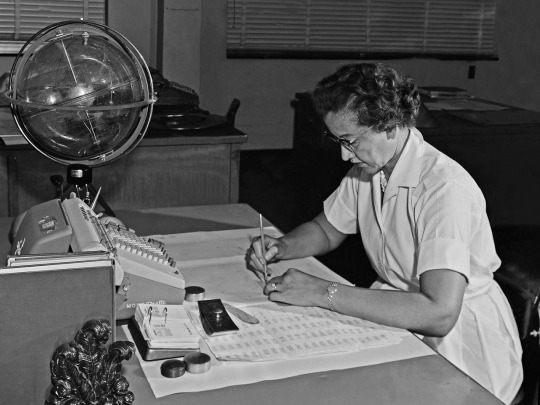
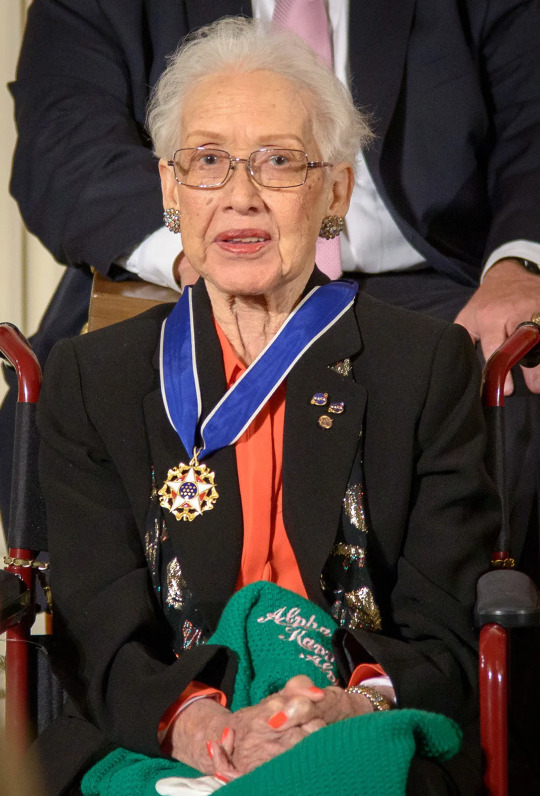
Katherine Johnson had a strong aptitude for mathematics from an early age. This skillset would lead to her graduating magna cum laude from West Virginia State College (at the age of 18!), to becoming one of the students to integrate West Virginia University, and, eventually, to her work in aerospace.
In 1953. Johnson became part of the pool of mathematicians working in the National Advisory Committee on Aeronautics’ (NACA) Guidance and Navigation Department in Hampton, VA. She was part of the team reading data from airplane’s “black boxes” and performing complicated, precise calculations with the data. One day, she was “temporarily” reassigned to the flight research team, where her grasp of analytic geometry impressed her superiors to the point that, “they simply forgot to return me to the pool.”
NASA replaced NACA in 1958, ending the “official” segregation of the Langley facility. Johnson was part Project Mercury that would send Americans into space. She calculated the trajectory for Alan Shepard’s flight when he became the first American, and second human, to go to space. John Glenn famously demanded Johnson double check the calculations a digital computer had made for the first orbital flight, refusing to fly until she made sure the machine had done it right.
Johnson continued to play a critical role in the development of America’s space program, including being part of the Apollo program, including calculating the trajectory of Apollo 11. The backup procedures and charts she worked on helped the Apollo 13 mission return safely to Earth after the disaster that cut that mission short. Johnson would also work on the Space Shuttle program, and the early days of NASA’s Mars mission before retiring from NASA in 1986.
Among her many honors, Johnson was awarded the Presidential Medal of Freedom by President Obama, NASA’s Silver Snoopy award, and the Congressional Gold Medal. Mattel also made a commemorative Barbie in her likeness, including a NASA identity badge.
Adventuress Katherine Johnson died at her home in Newport News, VA, on February 24, 2020. She was 101.
16 notes
·
View notes
Photo

The DSKY Moonwatch is a wristwatch that’s a shrunk-down replica of the Apollo Guidance Computer interface that the Apollo astronauts used to maneuver their spacecraft to the Moon and back. So nerdy!
10 notes
·
View notes